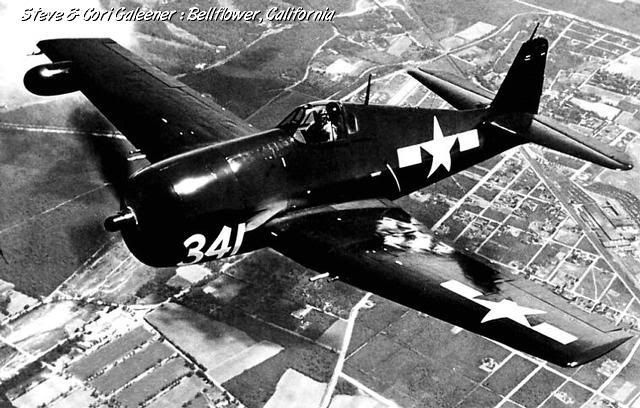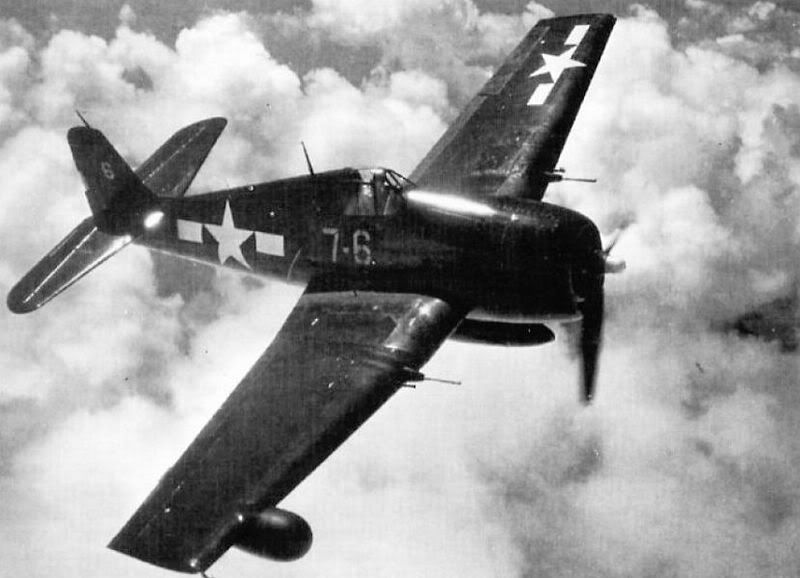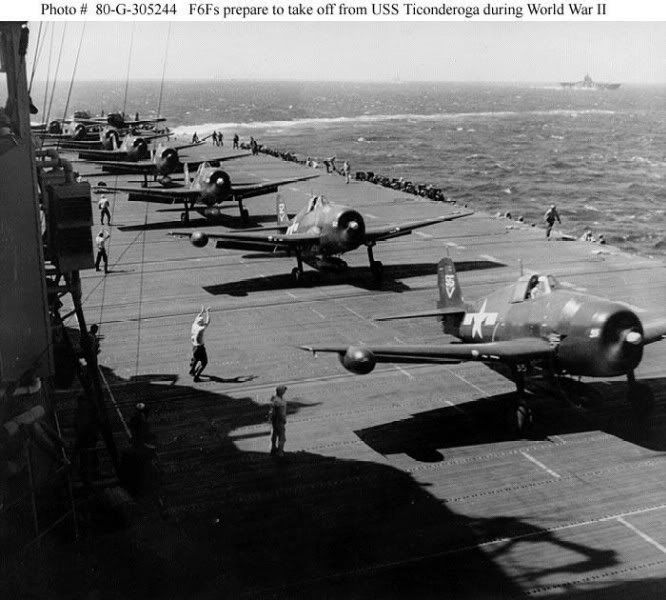William Henry F6F-5N Night Fighter September 12, 1944 saw the introduction of the new F6F-5Nís for VF(N)-41 flying from the deck of USS Independence CVL-23. There were 1,432 of the Night Fighter version built with APS-6 radar housed in a pod attached to the starboard wing. This provided pilots with a radar picture of another aircraft up to 5.5 miles away and a ship up to 20 miles. F6F-5N pilots had to undergo a rigorous 29 weeks of schooling where they would learn how to rely totally on their instruments since they would be flying at night in the dark with no visual reference for navigation or altitude. Originally armed with 6 .50 caliber machine guns, 3 per wing, some of the later versions came with 4 .50 caliber machine guns and 2 long barrel Hispano 20mm cannons that replaced the 2 inner .50 caliber guns. The Night Fighters were given strict orders that once they located a plane on radar they couldnít fire a shot until they could get close enough to identify the target as friend or foe.
As it turned out most of the F6F-5Nís flew daytime missions with other versions of the F6F. This would allow the radar equipped Hellcats to locate the enemy and guide their group towards them. The top USN Night Fighter ace was Lt. William E. Henry, Executive Officer (XO) of the VF(N)-41 squadron. He was credited with 6.5 nighttime and 4 daytime victories and the last victory for the USN F6F-5N.



Also, it is documented that some Hellcats were thought to have 20mm Cannons but it turns out that the inner 50 cal was simply extended outward. a 4 bladed prop does not mean more speed but more efficiency for the motor. With all respect to your grandfather, it may be a source of information to you but for it to viable, it needs to documented and filed. I can say how George Washington is my cousin but without proof, it is not valid. Yes, I have proof.

The point of the forums is to attempt to have a civil conversation; a debate. The only person I saw clueless and shooting down any idea was the first reply who referred to drinking to much. Clue: refers himself to drinking to much. Answer: A Clueless stick.
F6F Hellcat, FV-1 (Model G-50) - USN shipboard fighter. 1pClwM rg; span: 42'10" length: 33'7". Contrary to popular legend, the Hellcat was not specifically designed to cope with the Japanese Zero; it was in preliminary design stages as an improved F4F well before the outbreak of WW2. Planned production of F6F-1 by Canadian Vickers as FV-1 never materialized.
F6F-5 1944 = 2000hp P&W R-2800-10W (v: 366/166/89); new canopy, cowling, fairings, modified tail, underwing bomb racks; some with radar pod. POP: 7,870, of which some were converted as drone controllers -5D and drones -5K for the Korean War; 2 became XF6F-6.
F6F-5N 1944 = Radar night fighter conversions of F6F-5. POP: 1,434, of which 80 Lend-Lease to Fleet Air Arm as Hellcat II, aka NF-11.
F6F-5P 1944 = Cameras added.
XF6F-6 1944 = 2100hp R-2800-18W, four-blade prop; v: 417. POP: 2 conversions from F6F-5 [70188, 70913].
source:http://en.wikipedia.org/wiki/F6F_Hellcat
"The next and most common variant, the F6F-5, featured improvements such as a more powerful R-2800-10W engine housed in a slightly more streamlined engine cowling, spring-loaded control tabs on the ailerons, deletion of the rear-view windows behind the main canopy, an improved, clear view windscreen with a flat armored-glass front panel replacing the curved perspex panel and internal armor glass screen and numerous other minor advances.[9][13] Another improvement in the F6F-5 was the availability of more potent armament than the standard six .50 caliber (12.7 mm) machine guns. Trials with cannon-armed Hellcats were not followed up by a production version; although all F6F-5s could carry an armament mix of a pair of Hispano 20mm (0.79 in.) cannon, one mounted in each of the inboard gun bays, with a minimum of 220 rounds per gun, along with two pairs of .50 caliber (12.7 mm) machine guns, with 400 rounds per gun, this configuration was only used on many later F6F-5N night fighters. [14]
Two F6F-5s were fitted with the 18-cylinder 2,100 hp (1,567 kW) Pratt and Whitney R-2800-18W two-stage blower radial engine which was also used by the F4U-4 Corsair. The new Hellcat variant was fitted with a four-bladed propeller and was called the XF6F-6. The aircraft proved to be the best performer in the series with a top speed of 417 mph.[9] The war ended before this variant could be mass-produced.[15]
14 Kinzey 1987, p. 27.
15 Sullivan 1979, p. 46.
- Kinzey, Bert. F6F Hellcat in detail and scale (D&S Vol.26). Shrewsbury, UK: AirLife Publishing Ltd., 1987. ISBN 1-85310-603-8.
Kinzey, Bert. F6F Hellcat in detail and scale (D&S Vol.49). Carrollton, Texas: Squadron/Signal Publications Inc., 1996. ISBN 1-888974-00-1.
-Sullivan, Jim. F6F Hellcat in action. Carrollton, Texas: Squadron/Signal Publications Inc., 1979. ISBN 0-89747-088-5.